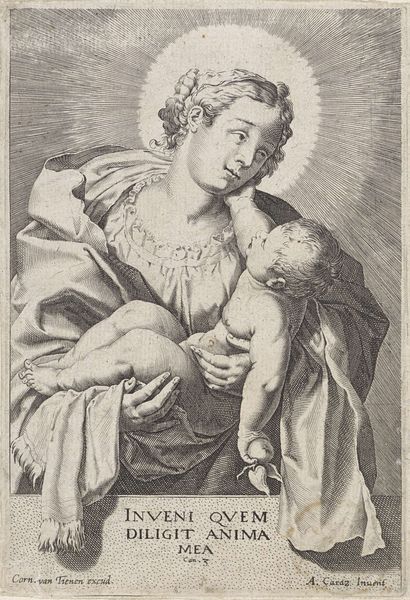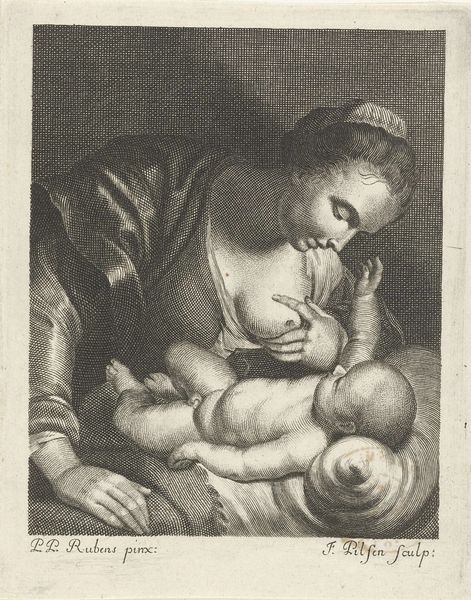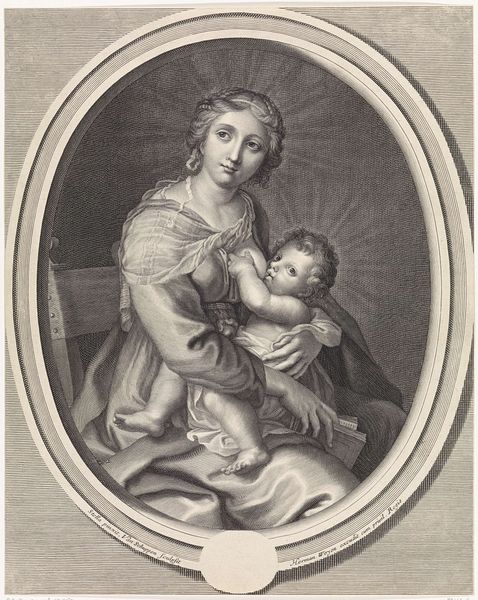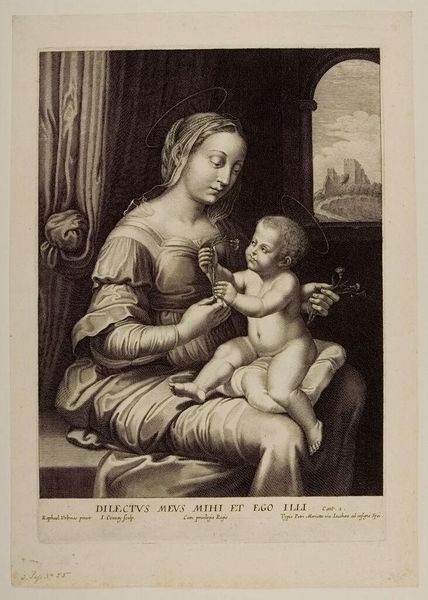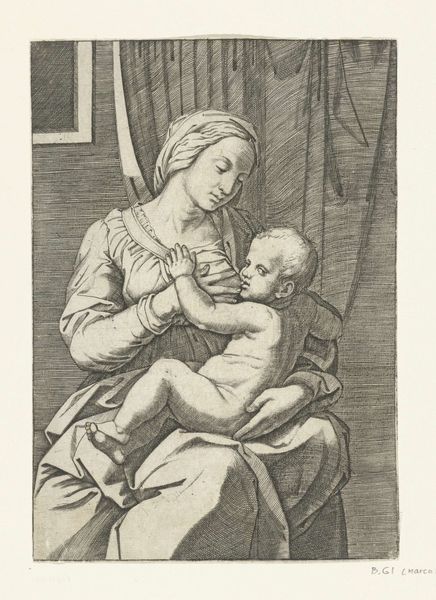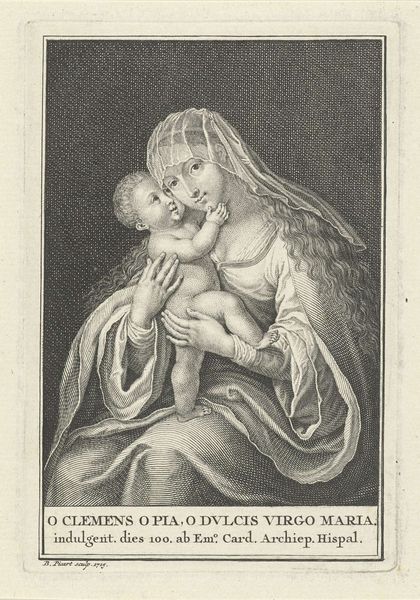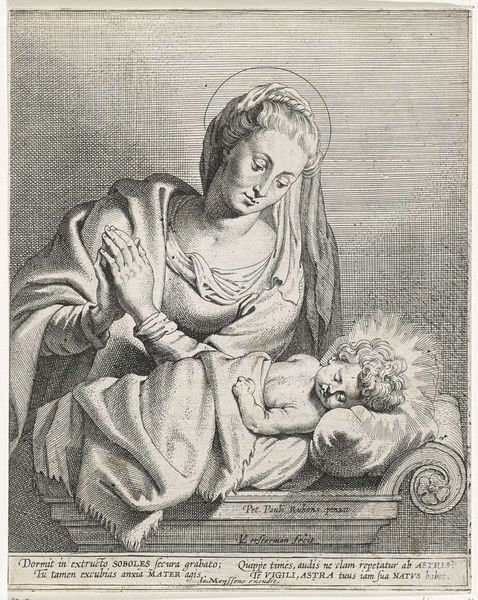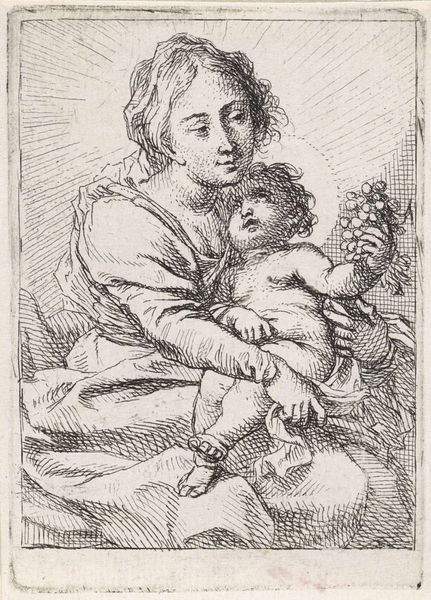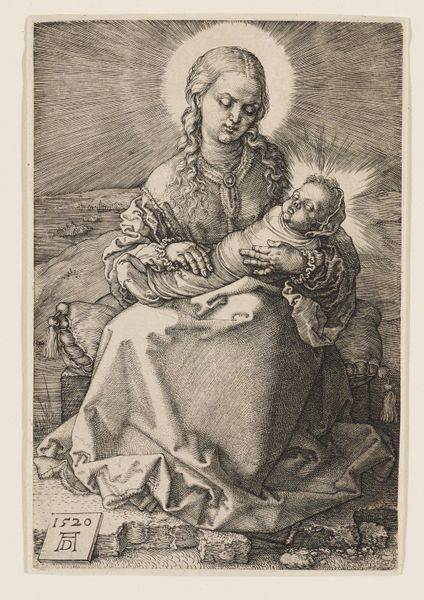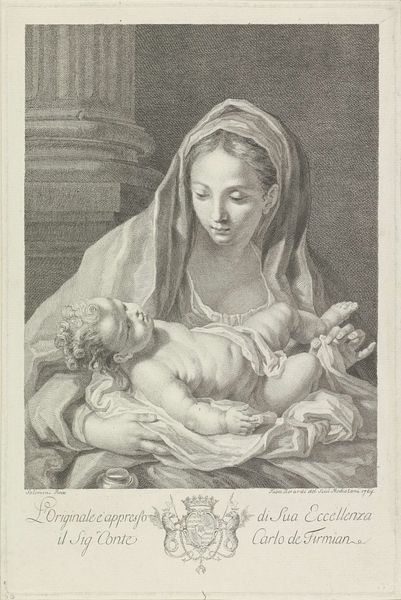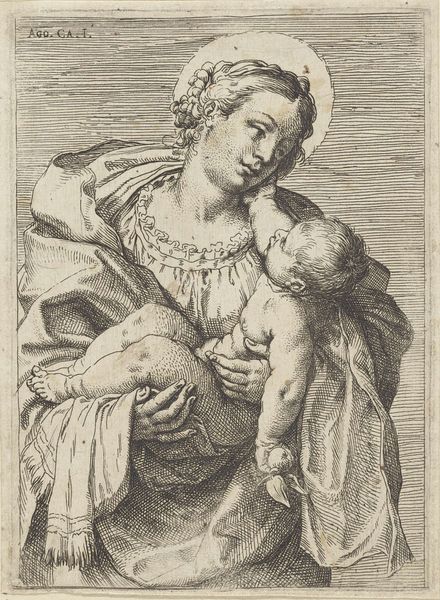
print, etching, engraving
#
portrait
#
baroque
# print
#
etching
#
history-painting
#
engraving
Dimensions: height 270 mm, width 204 mm
Copyright: Rijks Museum: Open Domain
Editor: So, here we have "Maria with Child and a Pear," an etching and engraving print crafted somewhere between 1625 and 1674 by Jan Lievens. The work, held at the Rijksmuseum, shows Mary gazing down at a sleepy baby Jesus while holding up a piece of fruit. It feels so intimate, almost like we're intruding on a private moment. What strikes you about this piece? Curator: That's a lovely sentiment! Intimacy is exactly what Lievens captures, isn’t it? For me, it's the pear that whispers secrets. In Dutch Golden Age art, fruit often symbolizes abundance, but also the Fall from grace, the knowledge of good and evil. Could Lievens be hinting at the future suffering and sacrifice of Christ, even amidst this tenderness? Do you see the delicate lines of the etching – they remind me of a mother’s touch, gentle yet firm. It is like a dance of light and shadow that evokes the era's history. What era would you compare it to, and how might those artistic influences converge or diverge from that period? Editor: It's so interesting that you noticed those themes. I've been diving into some gothic art and thought it resembles that due to the era, light, shadow, etc. Although I now believe it to be Baroque. I never really considered religious context while analyzing portraits. Do you think that, generally, religion plays an essential role in old artworks, or is it rather an implicit feature? Curator: An excellent question! Religion in old artworks isn't always a screaming headline, but more like a heartbeat, subtly shaping the rhythm and flow. It's the air they breathed, influencing their worldview, even if a piece isn't overtly religious. It's often implicit, shaping the iconography and meaning embedded in everyday scenes. You begin to read symbols once you grasp a bit about the cultural background, it becomes far more meaningful to know and witness all that is being displayed, not simply admire. Editor: It’s been helpful learning more about the time frame this came from, that allows for a greater understanding and perspective. It feels like I've unlocked a new level in understanding these paintings, making what was implicit, more explicit. Curator: Exactly, like discovering a hidden verse in a well-loved song. Art history does that – enriches the melody.
Comments
No comments
Be the first to comment and join the conversation on the ultimate creative platform.
